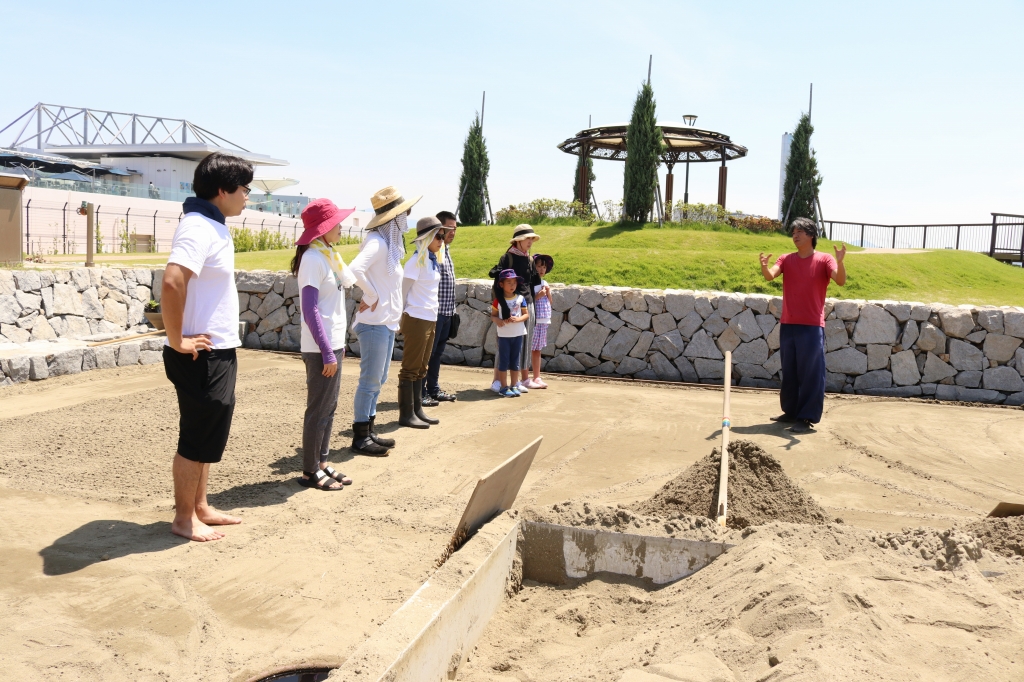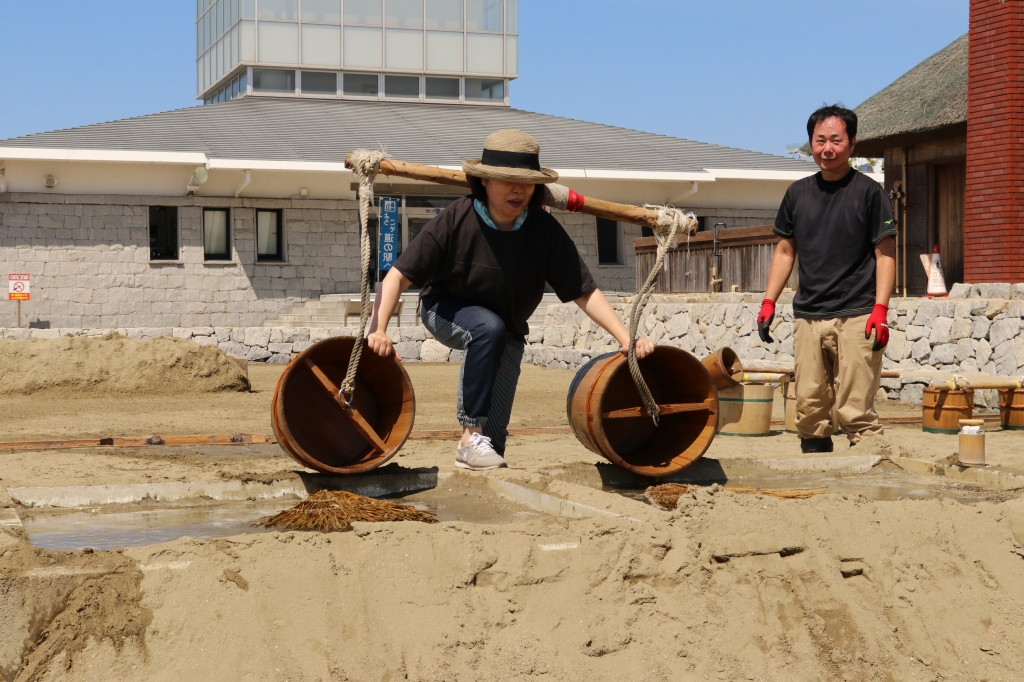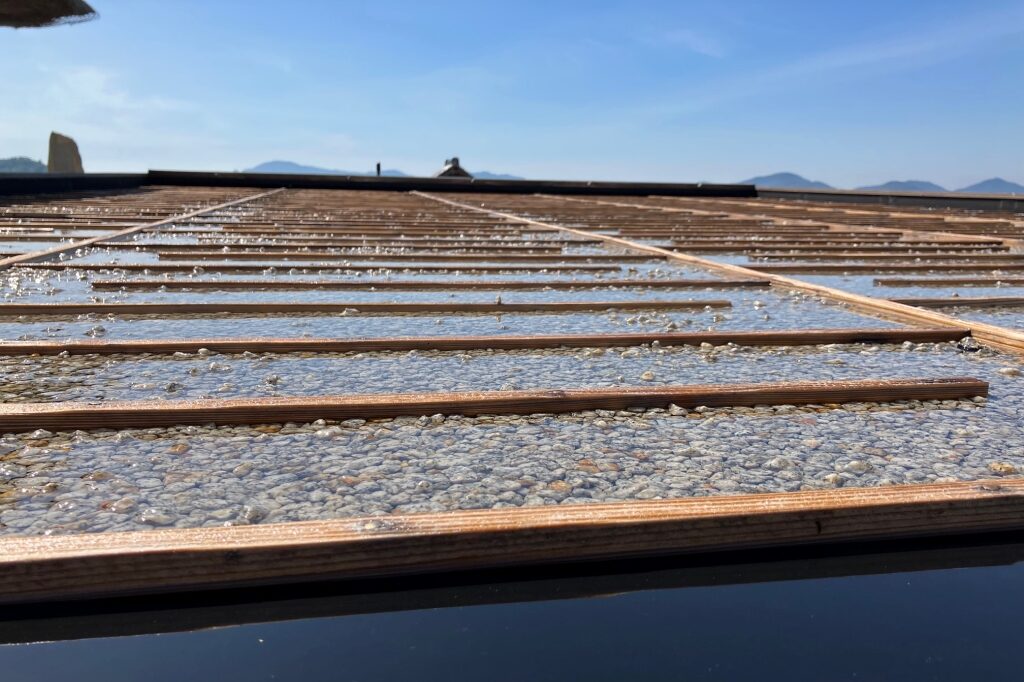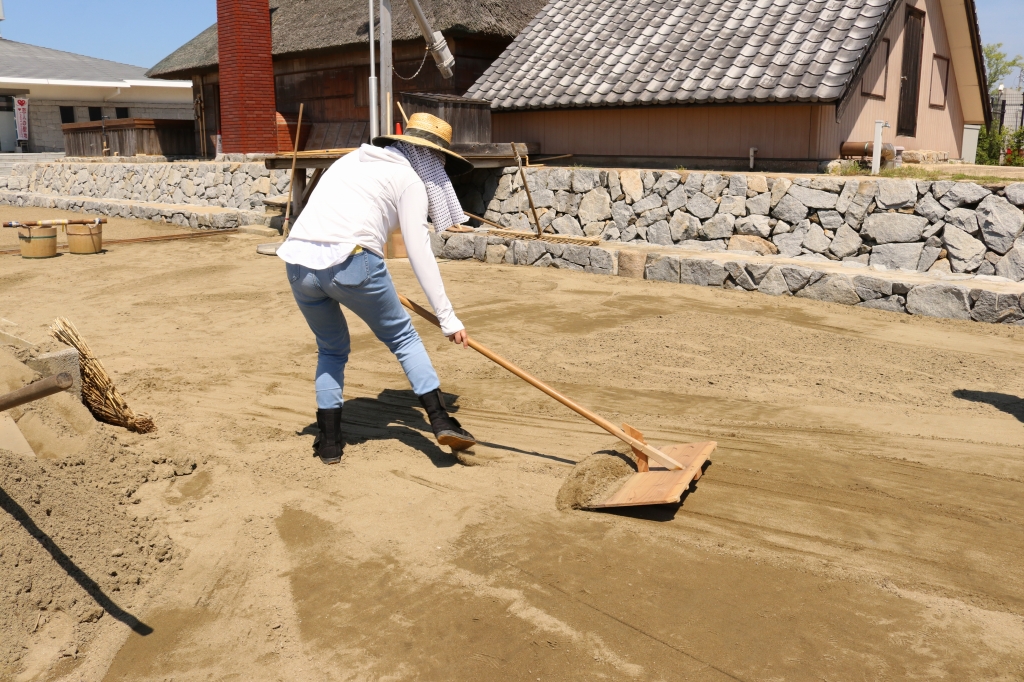温暖少雨の瀬戸内沿岸は、古くから塩づくりに最適な場所としていくつもの塩田がありました。宇多津のから坂出にかけての浜も、その一つ。かつては塩の生産量日本一を誇るほど広大な塩田は今はありませんが、「約230年にわたって町を支えてきた塩づくりの歴史を後世に伝えたい」という町民の願いが結び、1988年に塩田が復元されました。
The Seto Inland Sea coast, known for its warm climate and low rainfall, has long been an ideal location for salt production. The shores stretching from Utazu to Sakaide were once home to extensive salt fields, and at one point, this region boasted the highest salt production in Japan. Although these vast salt fields no longer exist, the desire to preserve and pass down the 230-year history of salt-making led to the restoration of a traditional salt field in 1988.
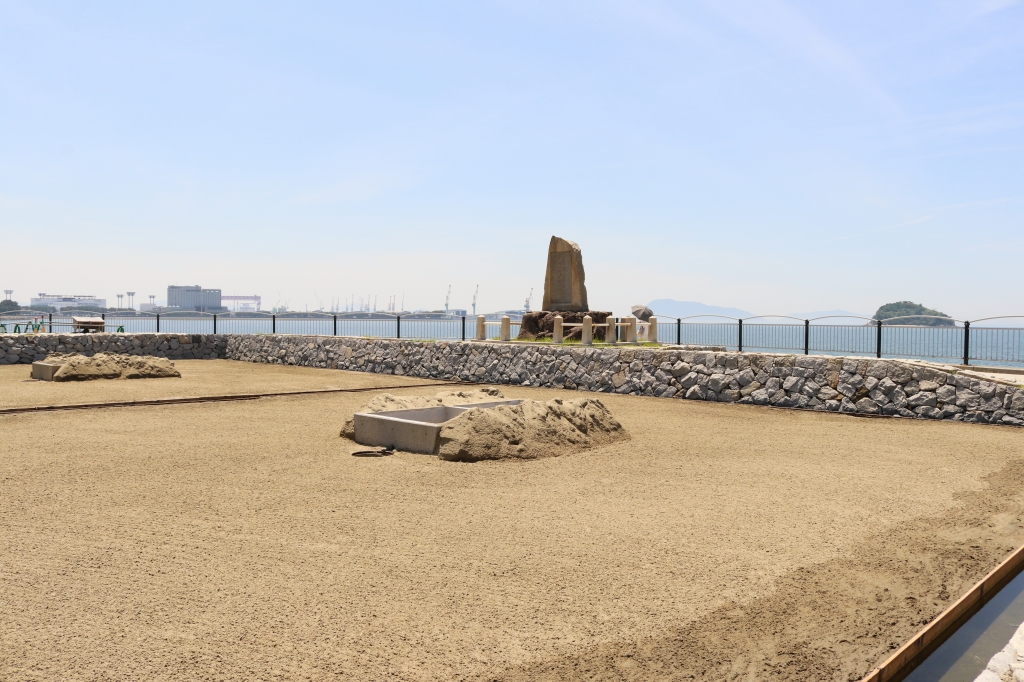
復元塩田があるのは、臨海公園の「うたづ海ホタル」。芝生広場や遊具の他、カフェレストランや宇多津町の特産品の販売コーナーもあります。その一角に整備された復元塩田は、江戸時代から1950年頃まで主流だった入浜式。ここでつくられた塩は販売もされており、塩を使った「塩キャラメル」などは宇多津のお土産としても人気です。
The restored salt field is located in Utazu Umihotaru, a seaside park that features a spacious lawn, playground equipment, a café-restaurant, and a shop selling specialty products from Utazu Town. Within this park, the restored salt field follows the irihama-shiki method, which was the predominant salt-making technique from the Edo period until around 1950. The salt produced here is available for purchase, and local treats such as “salted caramel” made with this salt have become popular souvenirs from Utazu.
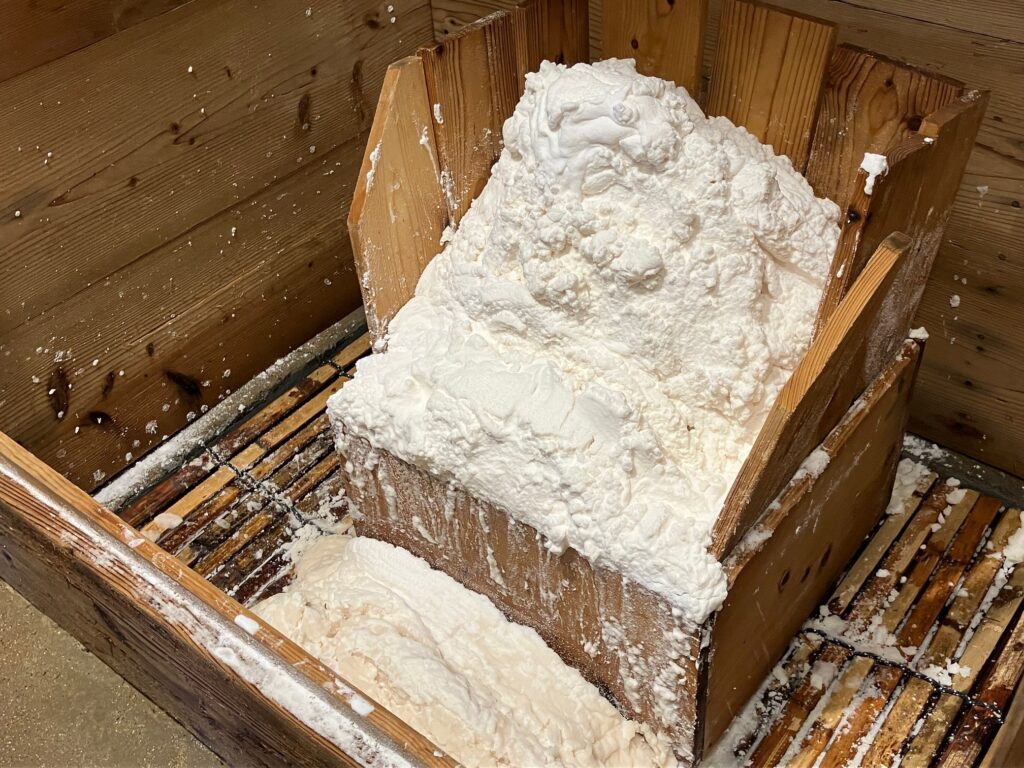
さらにこちらの復元塩田では、実際に塩づくりを体験することができます。
やってみると、想像以上に体力勝負。
砂に何度も海水をかけ、塩分濃度を高めて抽出し、さらに釜で炊き続ける…。「塩づくりは重労働」と身をもって知ると、試食の塩にもより一層おいしさを感じます。
Visitors can also participate in a hands-on salt-making experience at the restored salt field. The process is more physically demanding than one might expect—repeatedly sprinkling seawater over sand to concentrate the salt, then boiling it down in a kettle requires significant effort. Through this experience, participants come to appreciate firsthand the labor-intensive nature of traditional salt production, making the taste of the finished salt all the more rewarding.
